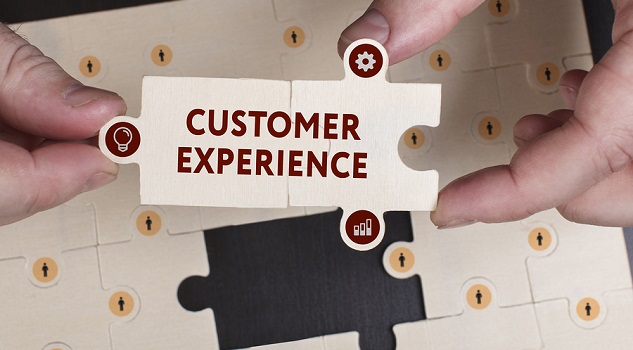Why are my competitors more successful than me?
If you’re a small-business owner who has never asked, “Why are my competitors more successful than me?” then stop reading, jump on your super maxi yacht and sail off into the sunset! For the rest of us mere mortals who want to grow and help more customers, read on.
How often do you stop and analyse your competitors?
Think about it for a moment: what are your competitors doing differently or better than you that commands more of your target audience’s attention (and wallet)? This question is worthy of you taking some time to quickly brainstorm.
Task: Take five minutes now and jot down the top five reasons why you think your competitors are more successful than you.
In my business, I have one such competitor that is very vocal about how successful they are. And being honest, they appear on the surface to be just that. On a revenue basis, they are approximately five times larger than us. I spent a heap of time studying them, and it took me a long, long time to work out what they were doing better than us.
“Your number one mission is to know your target audience better than they know themselves.”
Why? Because we have a far superior product offering, we produce better outcomes and results for our clients, and our service model kicks their lily-white bottom. Perhaps you’re in the same boat?
But then it dawned on me. Our competitors are communicating better “value” than we are. Nothing more, nothing less. For all the complexity that goes into a good business, the answer is really simple. Now, you may not like that answer, but unfortunately it’s the truth. Your competitors are offering better value.
Business is about the exchange of value
Business is primarily about providing the most amount of value in exchange for money. So, when a potential customer is in the process of deciding who to use or purchase from, they are going to choose the business they believe will provide them with the most value.
This is an emotional decision. It’s not about features or benefits. It’s not about how much money they’re going to save or how much quicker something will get done. It’s about how much better their life is going to be as a result. It’s about which brand/business is going to add the most value to their life.
How do you determine your value?
1. Understand it’s not about you
The biggest problem faced by every small business is that they forget it’s not about them. It’s not what you think or believe. It’s not even about the journey you want to take your customers on. It’s about your customer and the value they seek!
The “Holy Grail” is that it is all about the value they perceive to receive and how it’s superior (in their eyes) to what your competitors offer.
It’s not what they say they want; it’s about knowing what they really need.
As Henry Ford wisely said, “If I listened to what people wanted, I would have invented a faster horse.” Your number one mission is to know your target audience better than they know themselves. Understanding their secret pains, dreams and ambitions will catapult you ahead of the pack and drive the success of your small business; this is the foundation to outperforming your competition.
2. Know what problem you solve
A great business solves problems. These problems are the challenges that cause pain in the lives of the customers you want to serve – frustration, fear, anger, anxiety, jealousy, etc.
Buddhism talks about suffering being the first noble truth, that life is all about suffering and how we learn to live with it. How nearly all of our decisions are made on how to minimise and avoid pain in our lives. This is at the very centre of human emotion and decision-making.
When you purchase something, the decision-making is based on who you believe, like and trust to do the best job in taking some pain away in your life.
Seth Godin puts it another way: “What change do you want to make in the world?”
What pain exists in the world that you can take away or solve? This is a change from the way things are done now to the way they should be done. And this is done by addressing a specific problem or challenge that people face. Your challenge is to provide the best solution to this specific problem.
Why should you focus on taking the pain away?
- It’s a very different take on a value proposition – This approach requires a very different thought process to get to the true essence of why your business exists and how you can market your business better than your competitors.
- It requires an intimate knowledge of “who” – By understanding and speaking to your customers’ needs and problems, you immediately build rapport and trust, and create the sense of “they get me”.
- It sells the problem first, not the solution – Usually, our first focus is to sell the solution, which is wrong. Selling the features and benefits straight-up never works. It’s like a lucky dip: occasionally you get lucky, but mostly you’re just wasting your money. Sell me the problem first, and then I’ll buy your solution because I understand the priority and urgency that I need to place on it.
3. Explain it to me like I’m a five-year-old
I still remember that scene (or rather scenes) from the 1993 movie Philadelphia, where Denzel Washington’s character is grilling one of the witnesses on the stand about why Tom Hanks’ character was their best lawyer one day, then the next he was their worst, and they fired him. He kept asking, “explain this to me like I’m a two-year-old”. It’s such a powerful question that forces you to really boil down exactly what you are trying to explain.
“Can you explain the problem you are trying to solve to a five-year-old?”
I got this question from Play Bigger (I highly recommend it, by the way). One of the authors is part of a venture capital monthly pitch day where he asks this sensational question to all the pitch presenters (and very few answer it satisfactorily).
It makes the complex simple
This question forces you to take what is, for nearly every business, generally a very complex operation and distil it into something straightforward that even a five-year-old can understand. This is actually a really hard process.
It makes the simple compelling
This question also forces you to take the simple and make it compelling. It makes you communicate the problem your customer has quickly and articulate the solution you provide clearly.
A business exists to solve a problem
Whoever communicates that they can solve the problem more effectively and efficiently is the one who dominates the industry; this is the value people seek!
So, your more successful competitors are communicating how they can solve that one problem better than you. It’s now time to change that and deliver better value than your competitors, and success will follow.
This article first appeared in issue 33 of the Inside Small Business quarterly magazine














